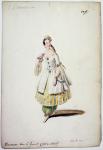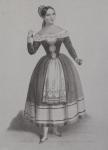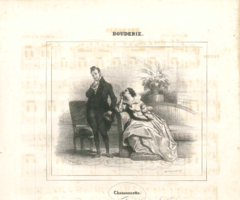
Laure CINTI-DAMOREAU
1801 - 1863
Soprano
Laure-Cinthie Montalant, dite Mlle Cinti puis Mme Cinti-Damoreau.
After studying piano, solfege and harmony at the Conservatoire de Paris, Laure-Cinthie Montalant trained in singing with Charles-Henri Plantade, who introduced her into the Paris salons. Spotted by Angelica Catalani, she made her debut at the Théâtre-Italien in the role of Lila in Una cosa rara by Martini (1816), using her middle, Italianised, Christian name, Cinti, as a stage name. Between 1816 and 1818, she mainly performed supporting roles, but won recognition as a prima donna in Il Califo di Bagdad by Garcia. Becoming a permanent member of the company in 1819, when the Théâtre-Italien came under the administration of the Paris Opéra, the singer won favour with the public performing Rosina in the Barbiere di Siviglia, Zerlina in Don Giovanni, Giulietta in Romeo e Giulietta, Amaltea in Mosè, Ninetta in La Gazza ladra and Aménaïde in Tancredi. Between 1825 and 1835, Cinti-Damoreau—she married the countertenor, Vincent-Charles Damoreau, in 1827—was one of the leading stars of the Paris Opéra, where she created Rossini’s other French operas—Le Siège de Corinthe, Moïse, Le Comte Ory and Guillaume Tell—as well as Auber’s La Muette de Portici and Meyerbeer’s Robert le diable. She then continued her career at the Opéra-Comique (1836-1841), where she was Auber’s favourite performer. Her career was exceptional not only for the number of roles she created but also for the variety of her repertory: she was one of those few singers to win acclaim across the board in opera buffa, opera seria, grand opera and opéra comique. Although, throughout her career, her voice was generally deemed insufficiently sonorous, Cinti-Damoreau was admired for her vocal technique, her ability to ornament melodic lines and, above all, for the flexibility and accuracy of her voice which, placed in the service of her extreme virtuosity, was all the more striking. She was often called “la serinette” (bird-organ) in Paris.She was also the first female singing teacher at the Conservatoire de Paris (from 1833 to 1856) and she published a widely-sold singing manual.










